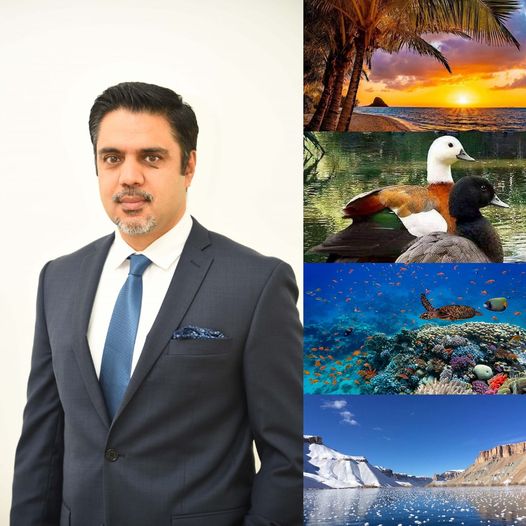June 05, 2021

On behalf of the South Asia Cooperative Environment Program (SACEP), I wish the governments and publics of our eight member-states a Happy World Environment Day 2021. This June 5th is a prime opportunity for all of us to recall that our resourceful region consists of about 25% of the world’s population, while South Asia houses a diverse range of ecosystems, from the permanent snowfields of the Himalayas to lowland forests and mangroves, with important grasslands and wetlands. Large numbers of flora and fauna species are associated with this diversity of ecosystems in our three mountainous and five coastal member-states.
At the same time, however, South Asia remains one of the world’s most vulnerable regions to the adverse effects of climate change caused by continued degradation of ecosystems and biodiversity across the world, including our region. A few often-quoted science-based facts demonstrate the extent of damage the world population has done to the nature, on whose conservation depends our own socio-economic wellbeing: “Humanity has altered 75 percent of the Earth’s ice-free surface; since 1990, 420 million hectares of forest, equal to three times the size of South Africa, have been lost; and nearly one million species face extinction, while illegal wildlife trade is the fourth largest illegal trade crime in the world.”
The impact of this environmental degradation continues to affect our impoverished populations the most across South Asia. In the past decade alone, nearly 700 million South Asians were affected by one or more climate-related disasters. Changing weather patterns are expected to impact directly over 800 million people by 2050. Between 2000 and 2017, disasters caused by natural hazards in the region caused damages worth $149.27 billion. The economic impact of the global COVID-19 pandemic has only exacerbated this, affecting poor daily wagers and farmers the most from Sri Lanka to Afghanistan.
Climate-vulnerable Afghanistan is probably hit the hardest, as climate-induced droughts and flush floods have internally displaced the country’s youth and deprived them of their rural jobs, which terrorist and criminal networks have replaced with paid violent and criminal activities. This shows that environmental degradation in South Asia not only harms public health but also undermines peace and prosperity with far-reaching implications for regional stability and international security.
That is why this World Environment Day, SACEP welcomes the declaration by the United Nations of this “Decade on Ecosystem Restoration.” This decade-long effort aims to prevent, halt, and reverse the degradation of ecosystems on every continent and in every ocean. Indeed, this endeavor can help end poverty, combat climate change, and prevent a mass extinction. But it will only succeed if all nations play a part. From our work with the SACEP member-states, despite the enormous challenges facing some of them, we know that South Asian governments are firmly committed to taking whatever climate action needed, within their means, to mitigate and adapt to climate change.
In the year ahead, we at SACEP encourage bolder regional policy interventions and adequate investments towards the implementation of all 17 sustainable development goals (SDGs) with a special focus on sustainable production and consumption to conserve our nature, on which the health and wealth of all South Asians depends. At the same time, we call on the developed countries and multilateral financing institutions to increase their climate support to the most vulnerable countries of South Asia, enabling them to take needed mitigation and adaptation measures against climate-induced disasters.
To that end, SACEP looks forward to collaborating with all our member-states to achieve the core objectives of our mission: “to support conservation and management of natural resources of the region and to work closely with all national, regional, and international institutions, governmental and non-governmental, as well as experts and groups engaged in such cooperation and conservation efforts.”
***